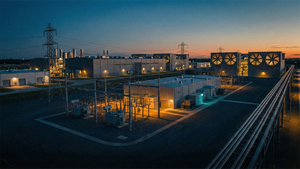
PCB manufacturing company TTM Technologies (NASDAQ: TTMI) reported Q2 CY2025 results beating Wall Street’s revenue expectations, with sales up 20.7% year on year to $730.6 million. On top of that, next quarter’s revenue guidance ($710 million at the midpoint) was surprisingly good and 5.6% above what analysts were expecting. Its non-GAAP profit of $0.58 per share was 11% above analysts’ consensus estimates.
Is now the time to buy TTMI? Find out in our full research report (it’s free).
TTM Technologies (TTMI) Q2 CY2025 Highlights:
- Revenue: $730.6 million vs analyst estimates of $670.1 million (20.7% year-on-year growth, 9% beat)
- Adjusted EPS: $0.58 vs analyst estimates of $0.52 (11% beat)
- Adjusted EBITDA: $109.7 million vs analyst estimates of $99.01 million (15% margin, 10.8% beat)
- Revenue Guidance for Q3 CY2025 is $710 million at the midpoint, above analyst estimates of $672.5 million
- Adjusted EPS guidance for Q3 CY2025 is $0.60 at the midpoint, above analyst estimates of $0.54
- Operating Margin: 8.5%, up from 6.4% in the same quarter last year
- Market Capitalization: $4.82 billion
StockStory’s Take
TTM Technologies’ second quarter was met with a negative market reaction despite revenue, non-GAAP profit, and adjusted EBITDA all surpassing Wall Street expectations. Management credited broad-based demand in aerospace and defense, data center computing, networking, and medical, industrial, and instrumentation markets for the performance. CEO Thomas Edman highlighted the company's diversified end markets and manufacturing footprint as key factors in minimizing tariff impacts and supporting top-line growth. The quarter also marked the announcement of Edman’s planned retirement, signaling an upcoming leadership transition.
Looking forward, TTM Technologies’ guidance reflects anticipated growth driven by U.S. investments in generative AI infrastructure and continued momentum in defense programs. Management pointed to major U.S. data center expansions by technology companies and government policy shifts as demand drivers. Edman cited customer commitment as critical for ramping new domestic capacity, stating, “We will only move when we have really customer commitment behind the investments that we make.” However, management acknowledged ongoing challenges in scaling the Penang facility and potential cost headwinds linked to U.S.-based manufacturing.
Key Insights from Management’s Remarks
Management attributed quarterly outperformance to robust demand in aerospace and defense, data center computing, and networking, while noting operational execution and strategic investments as key contributors.
- Aerospace and defense strength: The aerospace and defense segment represented 45% of sales, with a program backlog of $1.46 billion and strong bookings for radar-related systems, benefiting from increased U.S. and NATO defense budgets.
- Data center and AI demand: Data center computing sales hit a record high, fueled by generative AI applications and new investments from hyperscale technology customers. Management highlighted that roughly 30% of total revenue is now tied to generative AI end markets.
- Geographic and customer diversification: The company’s recent acquisition of a Wisconsin facility and land in Malaysia is intended to support future high-volume domestic and international production, aligning with customers’ supply chain diversification away from China.
- Penang facility ramping challenges: Progress in the new Penang, Malaysia facility has been slower than expected due to qualification delays and yield optimization, though customer interest remains high and the site is viewed as a long-term growth driver.
- Leadership transition: CEO Thomas Edman announced his retirement, with the board commencing a search for his successor. Edman will remain until a replacement is named, signaling continuity during the leadership change.
Drivers of Future Performance
Management expects near-term growth to be driven by expanded U.S. capacity, defense program momentum, and continued demand for AI-focused infrastructure, offset by cost pressures and execution risks.
- U.S. capacity expansion: The Eau Claire, Wisconsin facility is poised to accelerate domestic production of advanced printed circuit boards, particularly for data center and networking markets. However, management cautioned that significant customer commitment is required before major investments proceed due to substantial cost differentials versus Asia.
- Defense market tailwinds: U.S. and European defense spending is projected to increase, with TTM positioned to benefit from radar and missile defense programs. Management noted that about half of the company’s aerospace and defense business is linked to radar systems, which could see increased demand as government initiatives progress.
- Penang facility execution risks: While management remains optimistic about long-term growth in Malaysia, the Penang plant faces ongoing challenges in reaching breakeven due to slower-than-anticipated customer qualifications and operational ramp-up, which may impact margins in the short term.
Catalysts in Upcoming Quarters
In the quarters ahead, our analysts will be watching (1) evidence of customer commitments that trigger investment in new U.S. production capacity, (2) progress toward breakeven and yield improvements at the Penang facility, and (3) further growth in aerospace and defense program backlogs, especially related to radar and AI-driven applications. Ongoing leadership transition and any developments in M&A activity will also be key signposts.
TTM Technologies currently trades at $46.79, down from $48.74 just before the earnings. Is there an opportunity in the stock?Find out in our full research report (it’s free).
Now Could Be The Perfect Time To Invest In These Stocks
Trump’s April 2025 tariff bombshell triggered a massive market selloff, but stocks have since staged an impressive recovery, leaving those who panic sold on the sidelines.
Take advantage of the rebound by checking out our Top 9 Market-Beating Stocks. This is a curated list of our High Quality stocks that have generated a market-beating return of 183% over the last five years (as of March 31st 2025).
Stocks that made our list in 2020 include now familiar names such as Nvidia (+1,545% between March 2020 and March 2025) as well as under-the-radar businesses like the once-micro-cap company Kadant (+351% five-year return). Find your next big winner with StockStory today.
StockStory is growing and hiring equity analyst and marketing roles. Are you a 0 to 1 builder passionate about the markets and AI? See the open roles here.

















